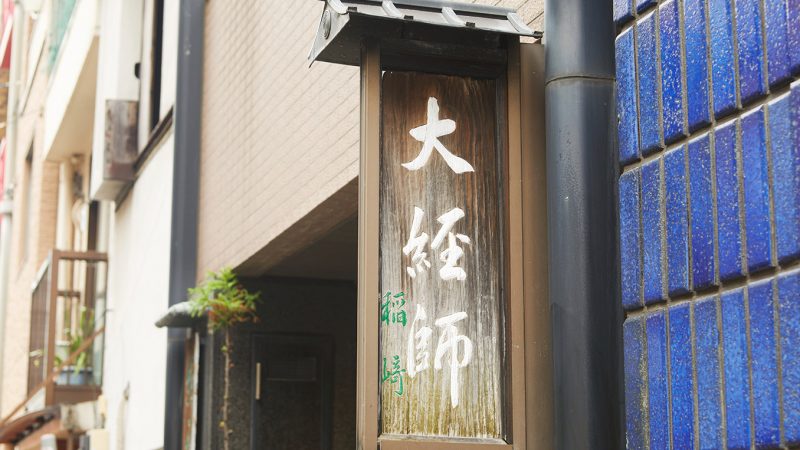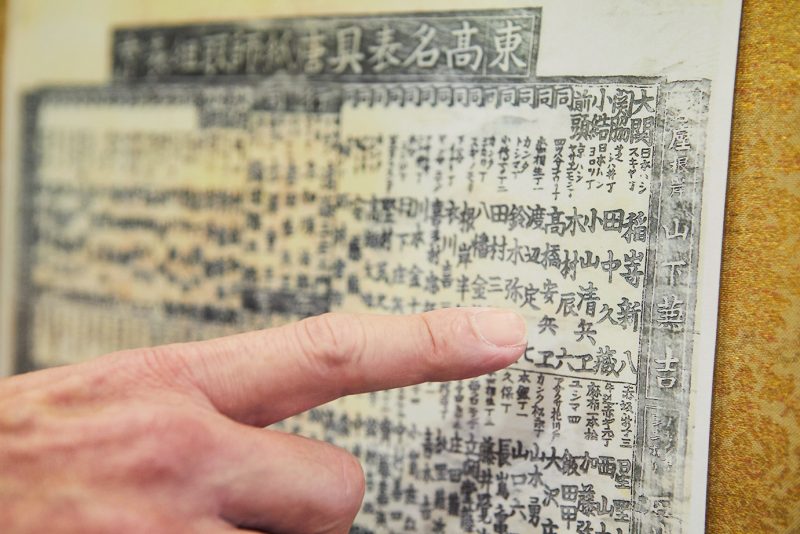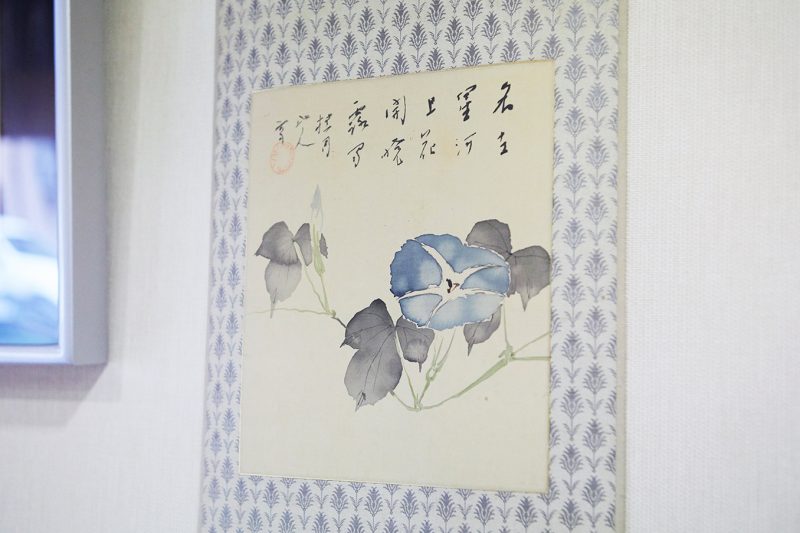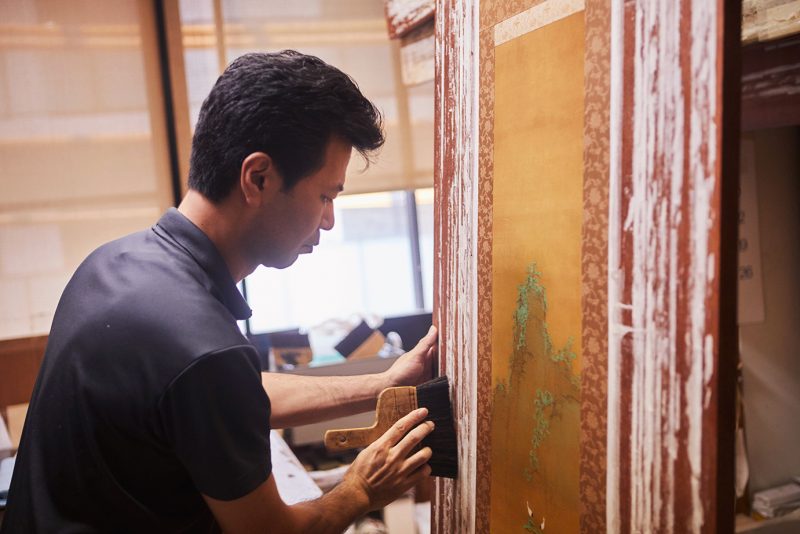
Stylish “Edo Hyogu” enhances the presence of the painting
We asked Tomonobu Inazaki, who runs the Hyogu store "Kyoushindo Inazaki" in Hamacho, Nihonbashi, about the origin of the store's name. ”The name 'Kyoshindo' came from the fifth generation which was my father. Until then, the name was '新八(Shinpachi) from the first generation. Although on naming you need a family register and other procedures and it was very difficult, and 経師屋(Kyoushiya)’s '経' and the '新八(shinpachi)'’s '新(shin)' and named it “経新堂(Kyoushindo)”.

"Daikyoushi” is written in the sign board and it differs from the stores name. “This title was given during the Edo period. "Daikyoushi is a Kyoushiya who were allowed to use their surnames and carry swords in and out of the castle of Edo.”

Inazaki-san creates Kakejiku and Byoubu as Hyogu craftsmen. When we asked about the characteristics of his work he answered us, "What we do is 'Edo Hyogu', and in Kyoto there are others called 'Kyoto Hyogu'. In Kyoto, there are many shrines and temples, and often decorate them with calligraphy written by the priests of the temples. Since the calligraphy is in black ink, and Kinran(gold brocade) is used a lot to look gorgeous by its gold thread. In contrast, the characteristic of Edo Hyogu is the Ukiyo-e culture of the Edo period, and the paintings are mainly used for the decoration. The purpose is to make the picture stand out, and picture without the surroundings standing first. This is what the stylish Hyogu is.“Certainly, the Kakejiku in store are decorated with patterned cloth, yet the pictures still catch the eye.

“If there are too many beautiful sutures in a period painting, the atmosphere will change. Therefore, I deliberately made the stains a little dull or dirty.” It is dedicated to recreating the atmosphere of the scrolls that have passed through history.

